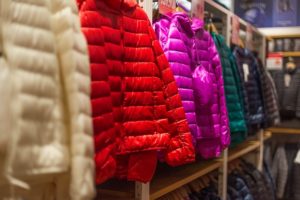 Spring cleaning is upon us. Winter is over and summer is coming. It is the perfect time to curate your wardrobe, get rid of old or unused clothing, and buy new clothes for the upcoming season.
Spring cleaning is upon us. Winter is over and summer is coming. It is the perfect time to curate your wardrobe, get rid of old or unused clothing, and buy new clothes for the upcoming season.
But as a consumer, I have been trying to purchase more sustainable and ethical products. And I’m not alone—in fact, 91% of consumers declare they would be more loyal to a company that supports a social or environmental issue.1 What can I do to make sure the clothes I buy respect my values?
Since 2000, the average number of garments purchased by consumers each year has increased by 60%. And consumers discard clothing twice as fast as 15 years ago. As a result, nearly 60% of all clothing produced ends up in incinerators or landfills within a year being made. In the US, only 15% of unwanted clothing is collected for recycling or re-use2.
Why should retailers implement social and environmental policies in their textile supply chain?
-
Environment
The textile industry has a significant impact on the environment, due to CO2 emissions, water use, and land use. If 80% of emerging markets achieve the same clothing consumption levels as the Western world, these impacts will increase, by 2025, by2:
- 77% for the CO2 emissions,
- 20% for the water use,
- 7% for the land use.
-
Supply chain risk
Transparency plays an important role in terms of policy implementation throughout retailer supply chains. When a retailer implements a policy to eliminate child labor, increase low wages, or manage health and safety hazards in factories, it is crucial that the retailer checks that all facilities included in its supply chain respect those rules.
-
Recycling
If a retailer decides to improve the recycling process of its clothes, it needs to ensure that the components used to make the clothing are recyclable. For example, fibers such as cotton-poly are currently un-recyclable into wearable new material.
What is done today?
-
Assessment
Organizations such as the Sustainable Apparel Coalition (SAC) have created tools to measure the environmental and social impacts of textile supply chains. Their indicator, the Higg Index3, can be used by retailers, brands, or manufacturers to identify areas of environmental or social improvement and take necessary action.
-
Certifications
Certifications such as Fair Trade4 also play an important role in helping brands respect social and environmental policies. Fair Trade International inspects factories to verify that they comply with certain standards on production methods, labor conditions, environmental considerations, and business practices.
-
Research
Other companies, such as Worn Again5, are developing solutions to improve the recycling process of clothes and components used.
Retailers leading the charge
Brands owners such as H&M6 have begun offering recycling bins to their customers to collect old or un-used clothing. Discounts on future purchases are also offered to encourage consumers to return, rather than discard, their old clothing.
Other brands, such as Patagonia or Everlane, provide detailed description of their supply chains by revealing the names of their suppliers as well as the country where their clothes are made.
How can Transparency-One help?
Transparency-One is a source to store supply chain risk management solution that allows you to:
- Identify all your suppliers from source to store
- List all the components used to make your products
- Verify that all the facilities used for making your products are socially certified. Transparency-One includes a list of social and Fair Trade certifications such as Fair Labour Association, FairTrade International or Sedex.
Transparency-One helps you discover, monitor, and analyze all your supply chains to improve your social and environmental commitments.
Sources
1 http://www.marketingcharts.com/traditional/will-consumers-pay-more-for-products-from-socially-responsible-companies-60166/
2 http://www.mckinsey.com/business-functions/sustainability-and-resource-productivity/our-insights/style-thats-sustainable-a-new-fast-fashion-formula
3 http://apparelcoalition.org/
4 https://www.treehugger.com/sustainable-fashion/what-does-it-mean-when-fashion-sustainable-or-ethical.html
5 https://www.fastcompany.com/3065862/how-hm-is-trying-to-counteract-fast-fashion-with-revolutionary-recycling










